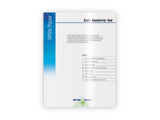To use all functions of this page, please activate cookies in your browser.
my.chemeurope.com
With an accout for my.chemeurope.com you can always see everything at a glance – and you can configure your own website and individual newsletter.
- My watch list
- My saved searches
- My saved topics
- My newsletter
NévéNévé is a young, granular type of snow which has been partially melted, refrozen and compacted. This type of snow is associated with glacier formation through the process of nivation. Névé that survives a full season of ablation is referred to as firn, which is both older and slightly denser. Firn becomes glacial ice - the long-lived, compacted ice that glaciers are composed of. Névé is annually observed in skiing slopes, and is generally disliked as a falling place. Additional recommended knowledgeNévé has a minimum density of 500 kg/m³. Névé can also refer to the alpine region in which snowfall accumulates, becomes névé, and feeds a glacier. References
|
| This article is licensed under the GNU Free Documentation License. It uses material from the Wikipedia article "Névé". A list of authors is available in Wikipedia. |
- Researchers successfully develop animal free methods for testing chemical compounds for allergens - EU-funded research project developing in vitro test strategies to reduce or replace animal testing use gene expression analysis software
- Category:Hormones_of_the_parathyroid_glands
- DSM announces management changes
- ASTRAZENECA INVESTS OVER $60 MILLION IN EXPANDED PRODUCTION FACILITIES FOR ‘SEROQUEL’






